- Contact usFR +33 450 872 109 US/CA +1 (646) 233-1354
- - Newsletter
- - Follow us





-

Home > Articles and tour tips > Getting there > Getting to Portugal: Lisbon and Porto
19-02-2020
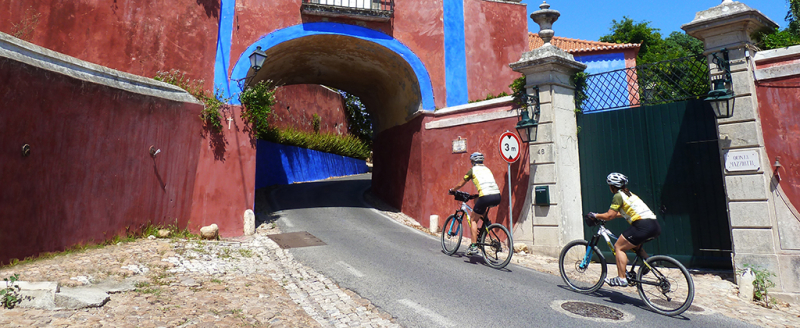
Portugal is a rapidly-growing hot spot for cycling trips. With its pleasant subtropical climate, rich and diverse culture, bustling cities, and breathtaking natural scenery both inland and coastal, it's no surprise that this geographically small nation is becoming a big tourist attraction. From metropolitan Lisbon with its bustling streets and wealth of surrounding natural beauty, to seaside Porto with its rich history and delicious cuisine, a vacation to Portugal is an adventure waiting to happen. In this article, we'll discuss options for reaching Portugal's various regions for the tours that we offer there.
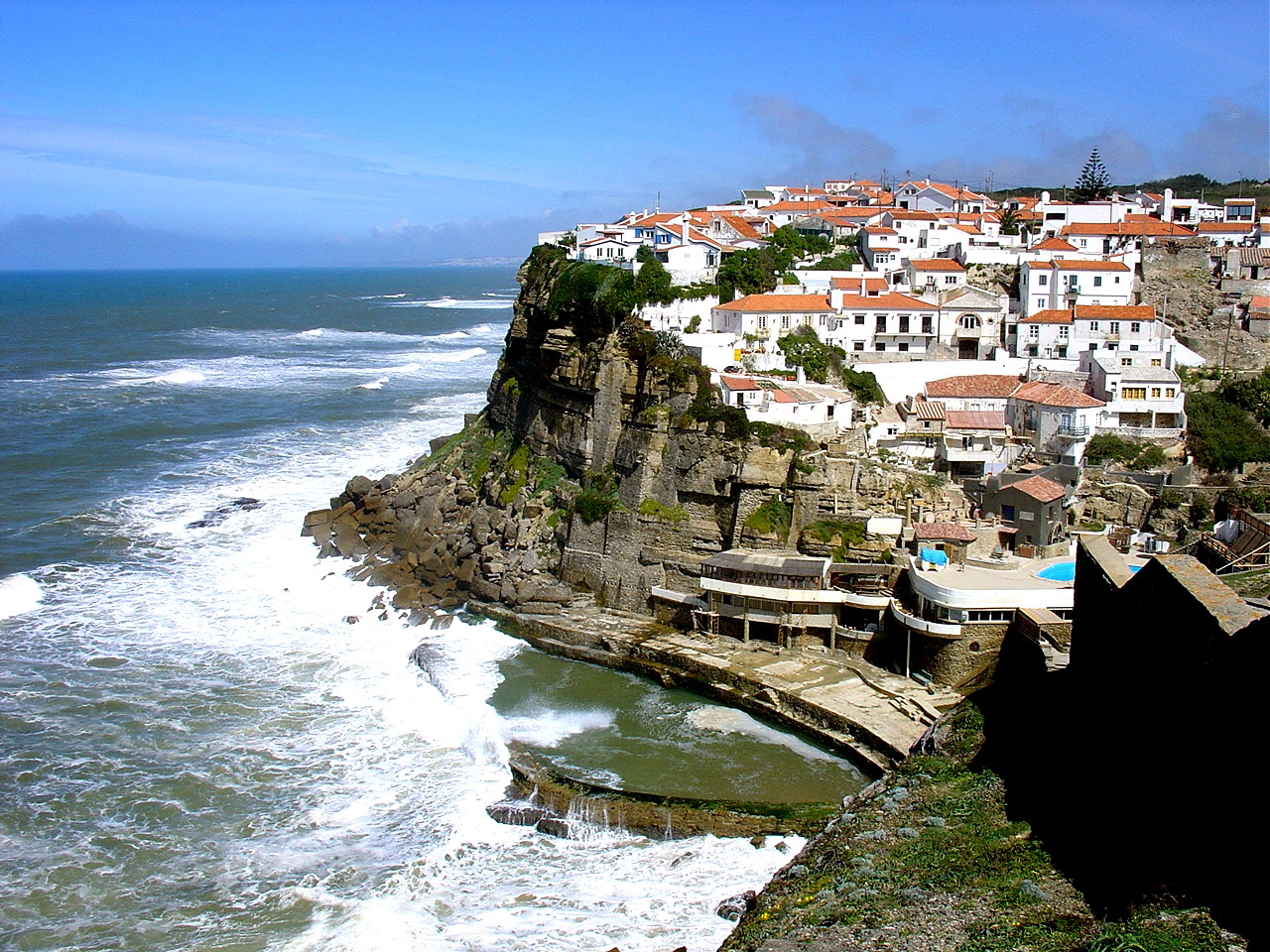
As the capital city of Portugal and one of the country’s most beatiful destinations, there’s a good chance Lisbon (known locally as Lisboa) will be the starting point for your Portuguese cycling adventure. Luckily, the fact that Lisbon is quickly growing in popularity with travelers means it is relatively easy to reach from far and wide. This article will cover the different options you have for getting to the city.
Lisbon is a hub of culture, art, tourism, finance, and trade, and this much becomes obvious as one explores its lively streets, strolling by ancient castles and towers while the city’s busy port hums with activity in the background. It is also one of the oldest cities in Europe, predating most other capital cities in the continent by centuries. As a result, Lisbon bears the marks of the many different civilizations that have ruled it through the ages, from Germanic tribes, to Moors, Romans, and Crusaders. It is located on Portugal’s Atlantic coast, making it Europe’s Western-most capital city. As the name would suggest, our “Lisbon and its Coast” tour starts here.
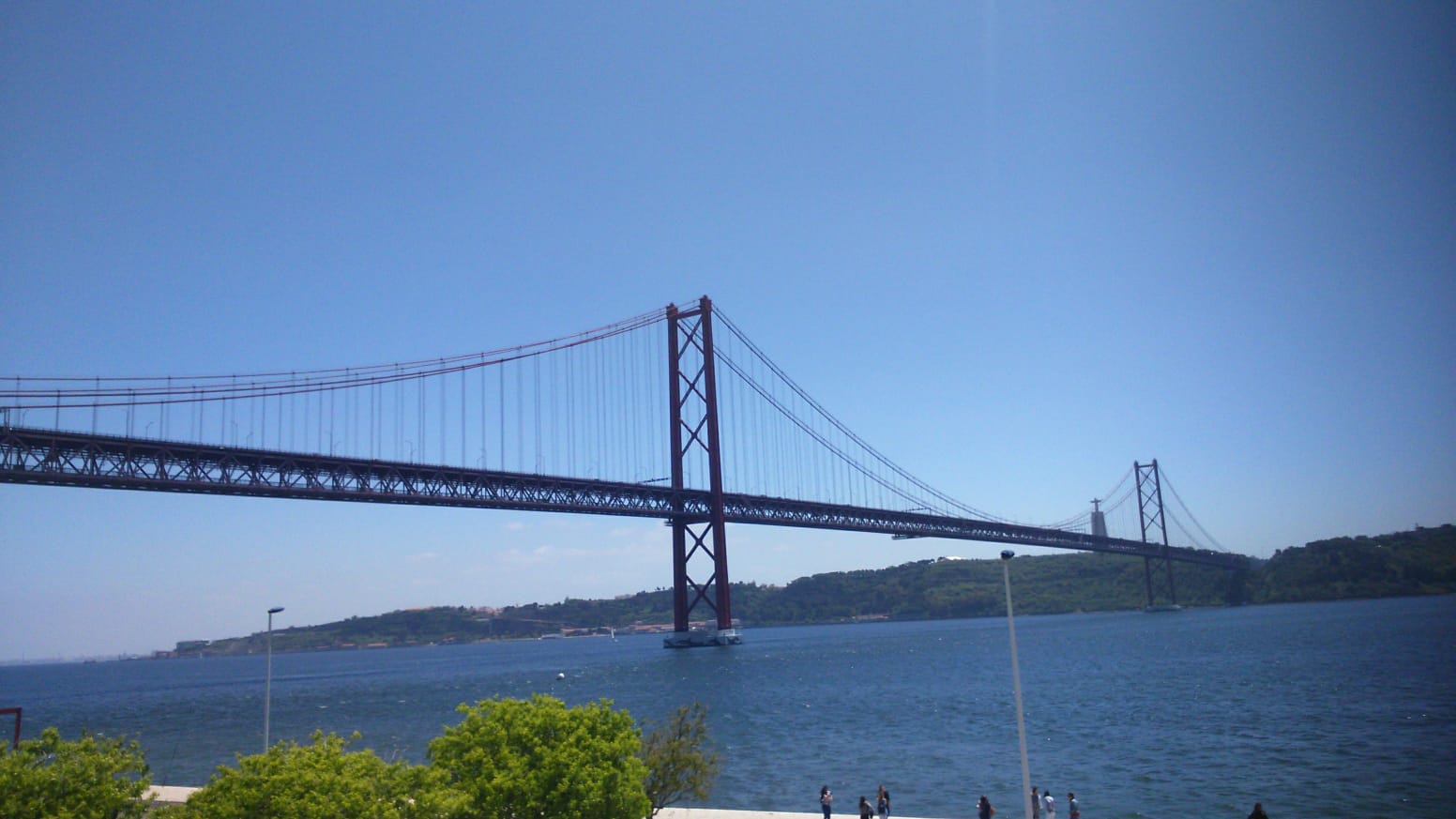
Fly directly into Lisbon’s airport
Lisbon’s airport, sometimes called Humberto Delgado Airport or Portela Airport, is a large international airport just 7km away from the city center. Many major international airlines service this airport, including Air Europa, Air Canada, Air France, Iberia, American Airlines, British Airways, Delta, Emirates, Lufthansa, Turkish Airlines, and KLM. Additionally, several European low-cost carriers such as Norwegian, Vueling, Ryanair, and easyJet also have flights to and from the Lisbon airport. If unable to find a direct flight from your country to Lisbon, you may have to fly through another major European city first, most likely Madrid, Paris, or London.
Although our tour includes a transfer from the airport to your first hotel, there are several different transport options to get to the city center:
You could take the Aerobus shuttle service, which has two lines depending on your destination within Lisbon. Line 1 departs every 20 minutes from 8:00 am to 9:00 pm and takes 30 minutes to reach its last stop in the city. Line 2 departs every 60 minutes from 8:00 am to 7:00 pm and takes 25 minutes to reach its destination, the Sete Rios bus terminal in downtown Lisbon. The shuttle has wifi, USB chargers, and ample space for your luggage. An adult one-way ticket costs 4 euros.
The city’s metro also links to the airport. The Aeroporto – Saldanha line will take you to the city center in 20 minutes, and the cost of a one-way ticket is just 1,50 euros.
The local Carris buses have five different routes that run between the airport and the city center. Buying the ticket on-board will set you back 2 euros, and the trip takes around 30 minutes. If you plan on taking this path, be wary of traffic jams. It might be prudent to time your bus ride to avoid the worst of rush hour, especially if your itinerary will be time-sensitive. Peak rush hour in Lisbon occurs Monday-Friday from 8-10 AM, 1-2 PM, and 4-6 PM.
For both the metro and the local buses, it would be advisable to get a Viva Viagem or 7 Colinas electronic transport card and recharge it, as this will make bus and metro tickets cheaper on many routes. You can buy these from ticket machines or ticket offices at stations.
Lastly, you could take a taxi into the city, although at approximately 15 to 20 euros for the journey, this would be the most expensive option.
For more information on the Lisbon airport, see: www.aeroportolisboa.pt/en
Aerobus shuttle: www.aerobus.pt
Metro: www.metrolisboa.pt/en
Carris buses: www.carris.pt/en/
By bus
If you are planning on traveling around Portugal or Spain before heading to Lisbon, you could take a bus to the city. Rede Expressos is the leading bus company in Portugal, offering both national and international routes. Alternatively, Flixbus is another company that offers cheap trips to Lisbon from other cities in Portugal, Spain, and even France. The bus journey from Porto to Lisbon takes about 3 and a half to 4 hours, depending on the bus carrier you choose. From Madrid, it will be a 9 hour journey approximately; and from Seville, around 7 or 8 hours. Be sure to book your bus tickets well in advance if possible; buying a month early can save you as much as 20 euros per ticket or more.
Sete Rios is the main bus station in Lisbon for long-distance national travel and international travel, but you might also arrive at Gare do Oriente station if coming from certain locations in Portugal or Spain.
For bus tickets and times in Portugal, see: www.rede-expressos.pt/en
Flixbus: https://global.flixbus.com
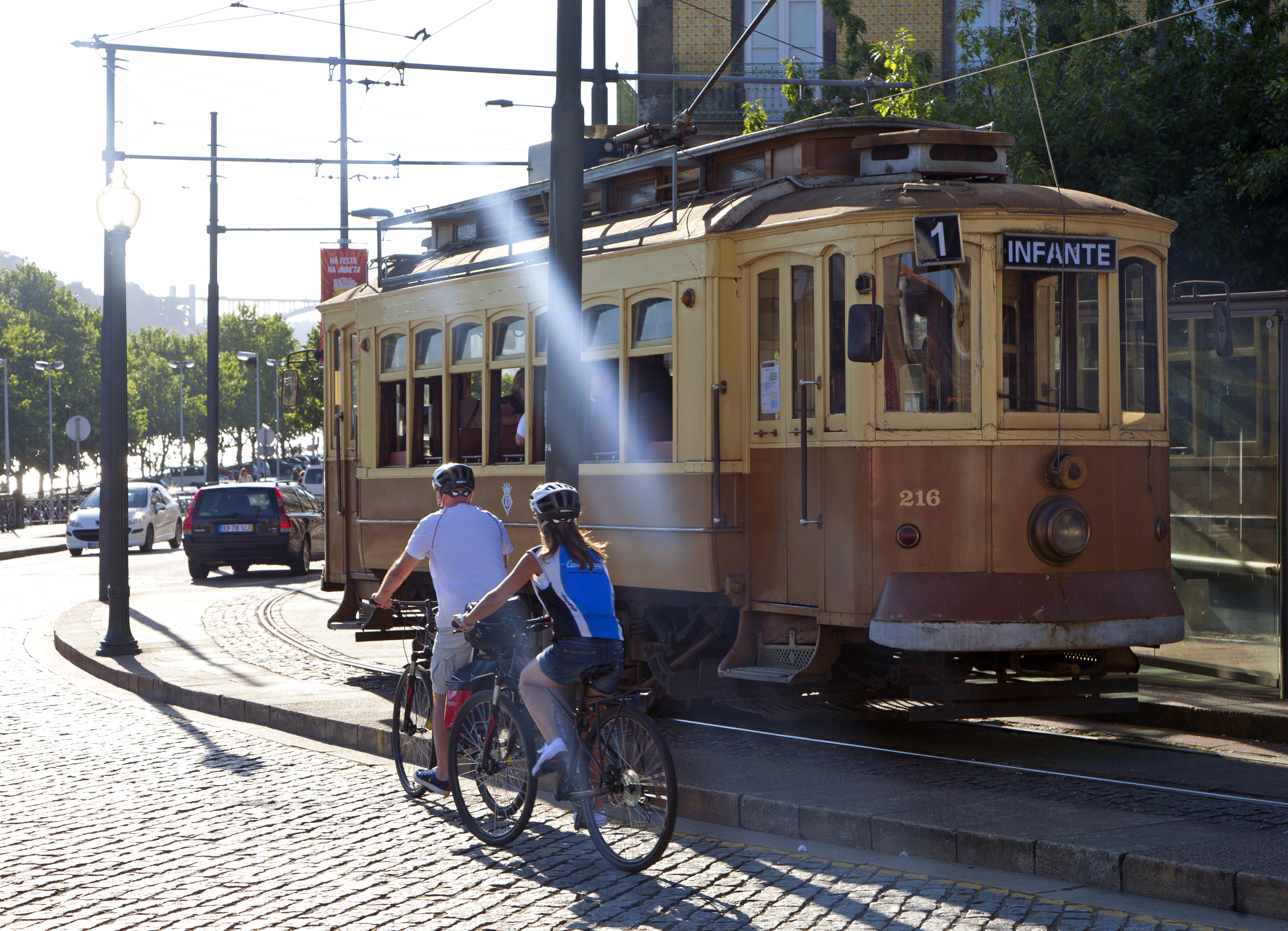
By train
If train travel is more your style, you can reach Lisbon by rail from a number of major cities in Portugal and Spain, including Porto, Faro, and Madrid. A train trip from Porto to Lisbon will take just under 3 hours. From Faro, the journey will take 3 or 4 hours, and from Madrid between 9 and 10 hours. If you’re coming from the U.K., one possibility is to take the Eurostar from London to Paris, and from there take a connecting train to Madrid and then on to Lisbon.
The main train station in Lisbon is Gare do Oriente, which serves millions of passengers every year.
For train times and tickets in Portugal, see: www.cp.pt/passageiros/en
By car
If you will be driving to Lisbon, you will need somewhere to park your car while you’re on your cycling tour. There are a number of public parking garages in the city center, some of them with a flat fee of 10 to 15 euros per day.
Some centrally-located garages include:
Garagem Santa Teresa
Empark Largo de Jesus
Emel Parking Calçada do Combro
Empark Camões
Chiado Parking
Saba Praça do Município
Emel Chão do Loureiro
Parking Martim Moniz
Empark Restauradores
Empark Campo Mártires
Empark Alexandre Herculano
Please see the following website for a map and more information: www.car-parking.eu/portugal/lisbon
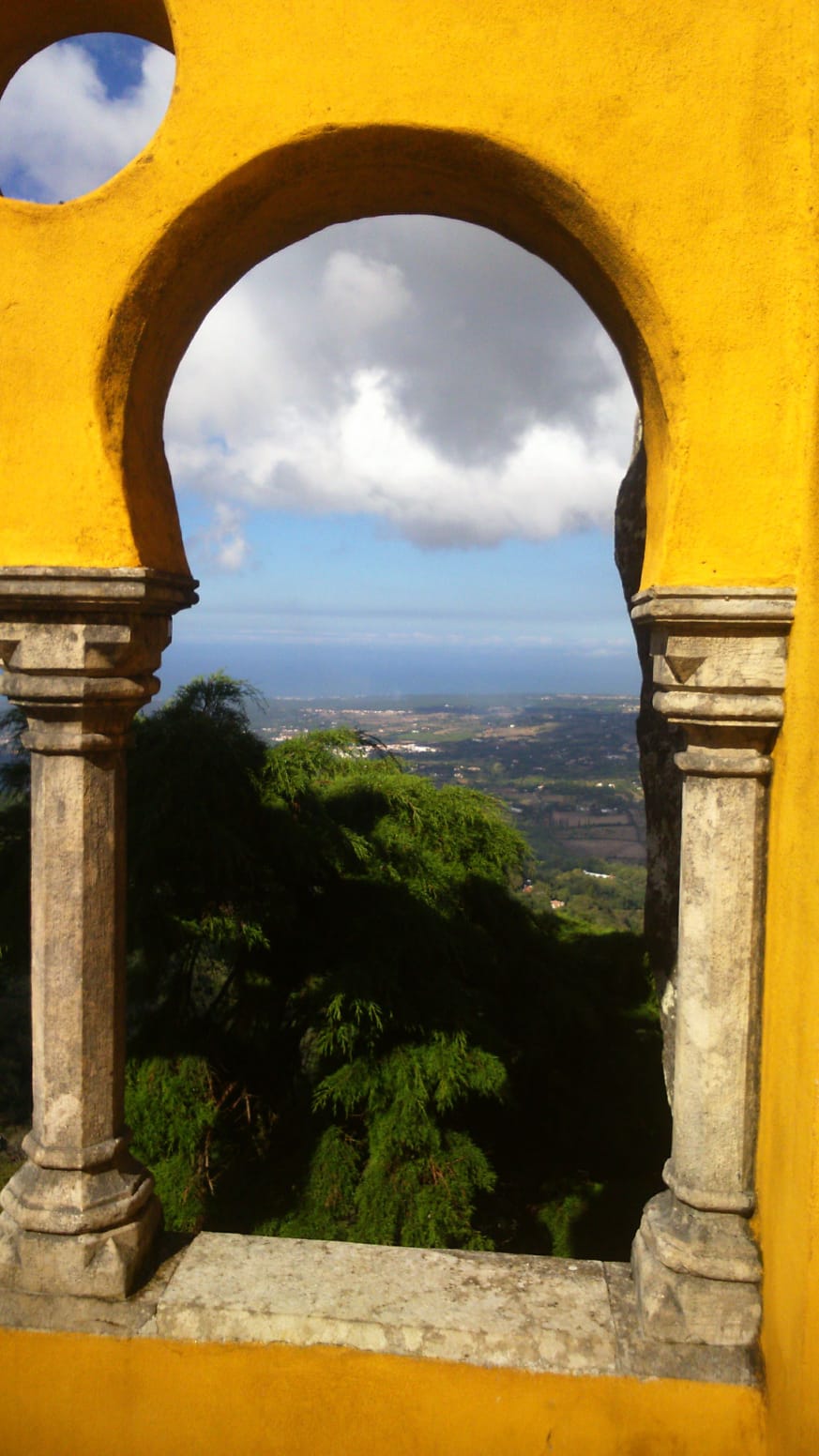
Porto, or Oporto in Portuguese, is the starting point of both our Douro Valley and Porto to Coimbra tours. In this article, we will cover all the different ways you have for getting to this breathtaking seaside city, so that all you have to worry about is getting on your bike and taking in the views!
Porto is Portugal’s second-largest city, famous for its Port wine, unique cuisine, and rich cultural legacy. Take a stroll through the city’s historical center, which has been named a World Heritage Site by UNESCO, and you will feel as though you are being transported back in time. A particularly well-known sight in this part of town is the impressive Porto Cathedral, a work of Romanesque architecture that has been standing for centuries. Or perhaps you would prefer to take in the views of the Douro River winding its way between the red roofs and colorful houses at its banks. There is simply no wrong way to spend your time in Porto!
.jpg)
Fly directly into Porto’s airport
Francisco Sá Carneiro Airport is located 11km from Porto’s city center, and is a base for Portugal’s national airline, TAP Air, as well as many international airlines such as Air Europa, British Airways, Emirates, Lufthansa, Air France, Iberia, and KLM among others. The airport is also serviced by several European budget airlines including Ryanair, Vueling, and easyJet. If you are unable to find a direct flight to Porto from your country, you may have to take a connecting flight from Lisbon or other major European cities such as Madrid, Paris, or London.
Although our tours include a transfer from the airport to your first hotel, there are several other ways you can reach the city center, including the metro, bus, shuttle, or taxis. We explain each option in detail below:
If you plan on using the metro, simply take the purple Line E, which runs from the airport to the city center every 20 to 30 minutes depending on the time of day and day of the week. This should take approximately 20 to 30 minutes and costs 2 euros one way (Zone 4 ticket).
If you would rather take the bus, the local STCP buses have three lines connecting the airport to the city center: lines 601, 602, and 604. These typically run every 25 to 30 minutes from 5:30 am to 12:30 am (lines 601 and 602) or from 6:00 am to 21:00 pm (line 604). These times may vary depending on the season. A single ticket should cost 2 euros one way.
There are also a number of shuttle services that will take you from the airport to the city center, and some will even take you directly to your hotel. You may book these online in advance. One such service is called 100rumos, which will charge you depending on the number of people you are traveling with (12 euros for 1 passenger, 9 euros each for 2 passengers, etc.). GOin is another shuttle service that will transfer you from the airport to the city center from around 4/5 euros. The transfer takes about 45 minutes.
Lastly, you could take a taxi into the city. Taxis are always available outside the airport, or you can order one by phone (the phone number for the Portuguese taxi association, Antral, is on the website linked below). You can also book a ride with an app like Cabify, Bolt (previously Taxify), or Free Now (previous My Taxi) (links below). Fares are based on distance and the cost of any tolls along the way, but are usually about 20 or 30 euros. There may be a supplementary baggage fee in addition. The journey should take about 20 minutes.
For more information on these services, please see the following links:
Porto’s airport: www.aeroportoporto.pt/en/opo/home
Porto’s metro: https://en.metrodoporto.pt
STCP buses: www.stcp.pt/en/travel
100rumos shuttle service: https://100rumos.com/en/shuttle_porto_options
GOin: www.goin.com.pt
Antral taxi association: www.antral.pt
Cabify: https://play.google.com/store/apps/details?id=com.cabify.rider&hl=en (Play Store) / https://apps.apple.com/us/app/cabify/id476087442 (App Store)
Bolt (Taxify): https://play.google.com/store/apps/details?id=ee.mtakso.client&hl=en (Play Store) / https://apps.apple.com/us/app/bolt-taxify/id675033630 (App Store)
Free Now: https://free-now.com/
By bus
You can reach Porto by bus from a variety of cities in Portugal and Spain. Rede Expressos is the leading bus company in Portugal, offering both national and international routes. Alternatively, Flixbus is another bus company that offers cheap trips to Porto from Lisbon, Faro, Madrid, Seville, and many other cities in Portugal and Spain. A bus trip to Porto from Lisbon should take about 4 hours, from Madrid 8 or 9 hours, from Seville 10 or 11 hours, and from Faro around 16 to 17 hours. Be sure to book your bus tickets well in advance if possible; buying a month early can save you as much as 20 euros per ticket or more.
Two of the main bus stations in Porto are Garagem Atlântico (where Flixbus buses stop) and Campo 24 de Agosto (where Rede Expressos buses stop).
For bus times and tickets in Portugal, see: www.rede-expressos.pt/en
Flixbus: https://global.flixbus.com
.jpg)
By train
Porto Campanhã is Porto’s main railway station. If you are arriving from Lisbon or from Spain, this is the station you will get off at in Porto. Taking the train to Porto from Lisbon will take just under 3 hours, with regular trains leaving every hour. From Madrid, it is about a 10 hour train ride to reach Porto.
Porto São Bento is another major train station offering a number of trains to and from Portuguese cities nearby.
For train times and tickets in Portugal, see: www.cp.pt/passageiros/en
By car
If you plan on driving to Porto, you will need somewhere to park your car while you’re cycling through the region. There are several paid parking garages in the city, with prices varying between 15 and 30 euros per day. Some of these include Irmãos Rocha car park (which also allows overnight parking for 12.40 euros a night), Palacio de Cristal (12 euros a day), Cristal Park (15 euros a day), and Lapa (3 euros per 7 hours of parking).
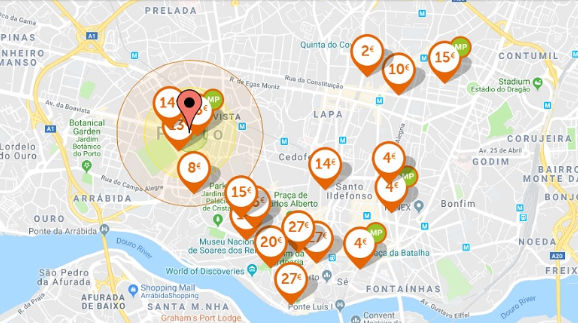
Map from: https://traveltipy.com/parking-porto
You can find open car parks and book spots in advance here: https://parclick.com/parking-porto?affiliate=5af2ad3b
Getting to Portugal: Lisbon and Porto
Alsace (6)
Andalusia (7)
Annecy (3)
Apulia (4)
Avignon (2)
Brittany (3)
Catalonia (6)
Corsica (3)
Cycling tips (19)
Dolomites (3)
Emilia-Romagna (2)
Events (7)
France (35)
French Alps (12)
General (68)
Getting there (16)
Girona (1)
Ile-de-France (2)
Italy (17)
La Rioja (3)
Languedoc (4)
Loire Valley (5)
Madrid (2)
Normandy (7)
Our Bikes (5)
Piedmont (4)
Portugal (1)
Provence (11)
Pyrenees (3)
Sicily (2)
Spain (15)
Switzerland (8)
Travel tips (23)
Tuscany (3)
Uncategorized (0)
Veneto (6)